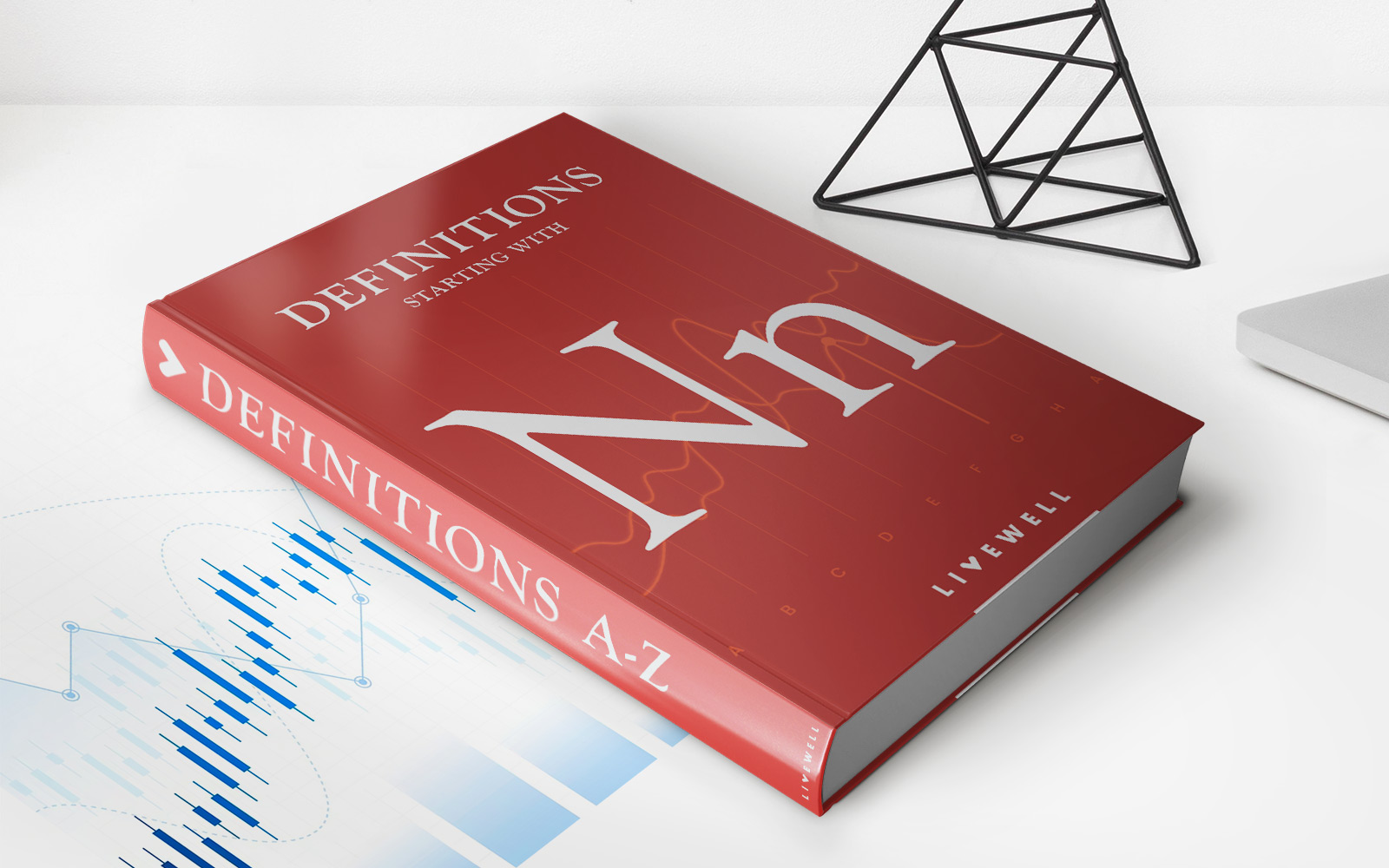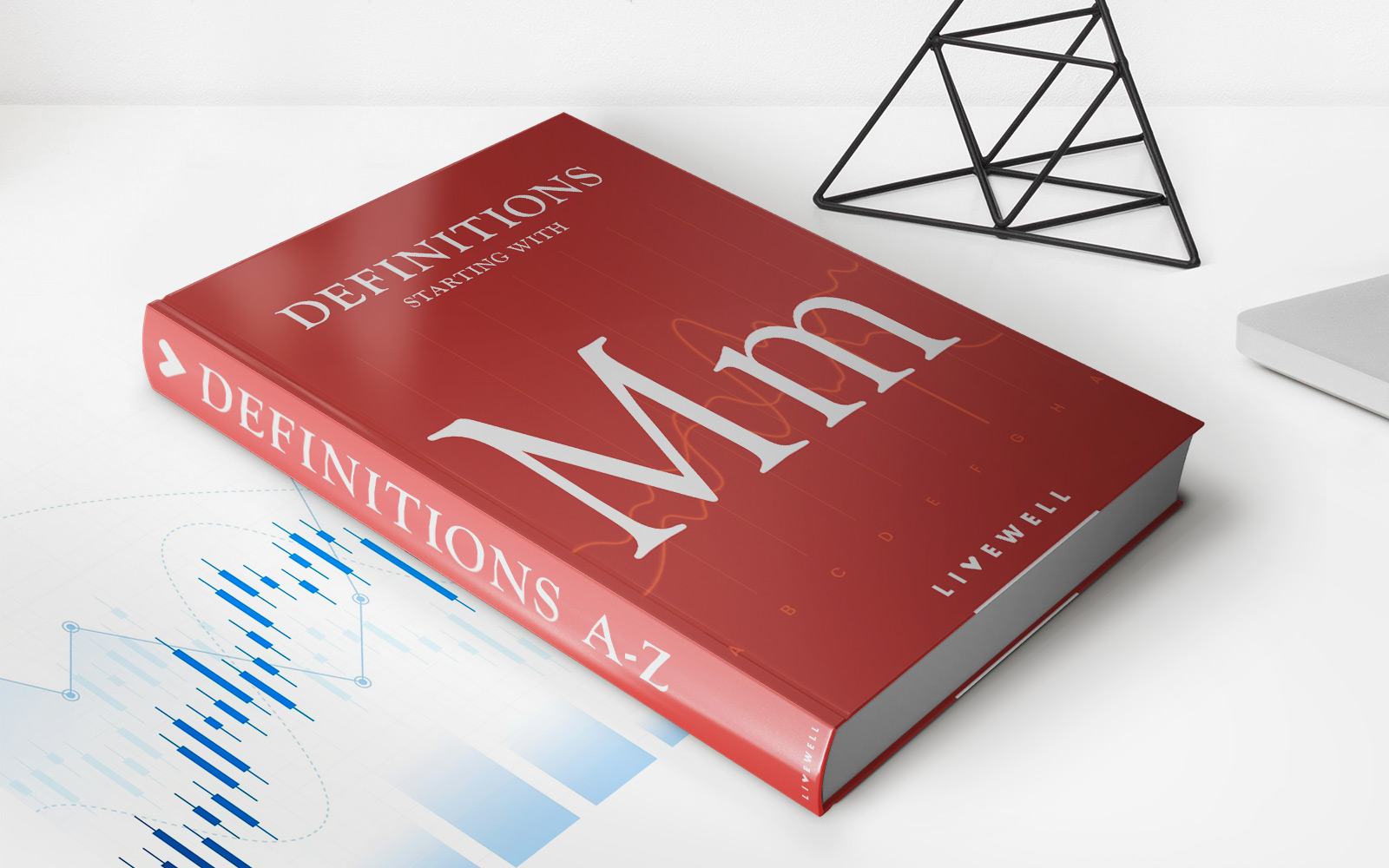

Finance
What Is A Simple 401K
Published: October 17, 2023
Looking to secure your financial future? Learn all about the simple 401K plan and how it can help you achieve your financial goals. Enhance your finance knowledge today!
(Many of the links in this article redirect to a specific reviewed product. Your purchase of these products through affiliate links helps to generate commission for LiveWell, at no extra cost. Learn more)
Table of Contents
Introduction
A Simple 401K is a retirement savings plan designed for small businesses with up to 100 employees. It offers employees a way to contribute a portion of their salary to a retirement account, while also benefiting from potential employer contributions. This type of plan is relatively easy to set up and has lower administrative costs compared to traditional 401K plans.
The concept of a 401K originates from the Internal Revenue Code Section 401K, which allows employees to save for retirement on a tax-deferred basis. The Simple 401K plan falls under this code section, but it has specific rules and requirements tailored to small businesses.
With a Simple 401K, both the employer and the employee can contribute to the retirement account. The employee’s contributions are made on a pre-tax basis, meaning they are deducted from the employee’s paycheck before taxes are calculated. This reduces the employee’s taxable income and allows their savings to grow tax-deferred until retirement. Employer contributions can be in the form of a matching contribution or a non-elective contribution.
It’s important for both employers and employees to understand the benefits and limitations of a Simple 401K. In this article, we will delve into the details of a Simple 401K, including eligibility requirements, contribution limits, employer contributions, vesting, withdrawals and distributions, tax implications, and the advantages and disadvantages of this retirement savings plan. We will also guide you on how to set up a Simple 401K for your small business.
So, whether you are a small business owner considering offering a retirement plan to your employees or an employee looking to maximize your retirement savings, keep reading to discover the ins and outs of a Simple 401K and how it can benefit you.
Definition of a Simple 401K
A Simple 401K, also known as a Savings Incentive Match Plan for Employees (SIMPLE) 401K, is a type of retirement savings plan that is specifically designed for small businesses. It provides a way for employees to contribute a portion of their salary to a retirement account, and allows employers to make contributions as well. The key feature of a Simple 401K is that it offers a simplified plan structure and lower administrative costs compared to traditional 401K plans.
One of the defining characteristics of a Simple 401K is the eligibility requirements. To be eligible to participate in a Simple 401K, an employee must have earned at least $5,000 in compensation during any two preceding calendar years and must be reasonably expected to earn at least $5,000 in compensation in the current year. This allows small businesses with fluctuating employee numbers to offer retirement benefits without excluding part-time or seasonal employees.
With a Simple 401K, both the employee and the employer can make contributions to the retirement account. Employees can contribute a portion of their salary on a pre-tax basis, meaning the contributions are deducted from their paycheck before taxes are calculated. This reduces the employee’s taxable income and allows their savings to grow tax-deferred until retirement.
Employers have two options for their contributions to a Simple 401K: matching contributions or non-elective contributions. Matching contributions are when the employer matches a certain percentage of the employee’s salary deferrals, up to a specified limit. Non-elective contributions are when the employer makes a flat contribution to all eligible employees’ accounts, regardless of whether the employee contributes or not.
Another important aspect of a Simple 401K is the contribution limits. For employees, the maximum contribution limit for 2021 is $13,500, with an additional catch-up contribution of $3,000 allowed for employees aged 50 and above. Employers can choose to match the employee’s contributions up to 3% of their compensation or make a non-elective contribution of 2% of their compensation for all eligible employees, subject to certain limits.
A Simple 401K also has specific rules regarding vesting. Vesting refers to the ownership of the funds in the retirement account. Employees are always 100% vested in their own contributions and any earnings on those contributions. However, employer contributions may be subject to a vesting schedule, which determines when the employee becomes fully vested in those employer contributions.
In the next section, we will explore the eligibility requirements for a Simple 401K and how it can benefit both employees and employers.
Eligibility for a Simple 401K
In order to participate in a Simple 401K, both employers and employees need to meet certain eligibility requirements. These requirements ensure that the plan is accessible to small businesses and allows employees to save for their retirement. Let’s take a closer look at the eligibility criteria for both employers and employees.
For employers, the main requirement is that the business must have 100 or fewer employees. This makes a Simple 401K an attractive option for small businesses, as it allows them to offer retirement benefits without the burden of complex plan administration and high costs. It is important to note that the employee count includes all employees who received any compensation during the year, regardless of their full-time, part-time, or seasonal status.
As for employees, there are two key eligibility criteria to be eligible for a Simple 401K. Firstly, the employee must have earned at least $5,000 in compensation during any two preceding calendar years. This ensures that employees who have been with the company for a shorter period of time are still able to participate in the plan. Secondly, the employee must be reasonably expected to earn at least $5,000 in compensation in the current year. This requirement ensures that employees who have a fluctuating income can still contribute to their retirement savings.
It is worth noting that there are no age restrictions for participating in a Simple 401K. This means that both younger and older employees can take advantage of the plan and save for their future retirement.
For small businesses, offering a Simple 401K can have numerous benefits. Firstly, it helps attract and retain talented employees. Retirement benefits are highly valued by employees, and by offering a retirement savings plan, businesses can differentiate themselves from their competitors and create a more enticing employment package. Additionally, employers may be eligible for a tax credit for the first three years of establishing a Simple 401K plan, which can help offset the setup and administrative costs.
For employees, participating in a Simple 401K provides a convenient and tax-efficient way to save for retirement. Contributing to a Simple 401K allows employees to reduce their taxable income, as contributions are made on a pre-tax basis. This means that the money is deducted from their paycheck before taxes are calculated, reducing their overall tax liability. Over time, the contributions and potential earnings can grow tax-deferred until retirement, providing a solid financial foundation for the future.
It’s important for both employers and employees to understand and fulfill the eligibility requirements for a Simple 401K. By doing so, small businesses can offer valuable retirement benefits to their employees, while employees can take advantage of a convenient and tax-efficient way to save for their golden years.
Contribution Limits
When it comes to a Simple 401K, there are specific contribution limits that both employees and employers need to be aware of. These limits determine the maximum amount that can be contributed to the retirement account each year. Let’s explore the contribution limits for a Simple 401K in more detail.
For employees, there is an annual maximum contribution limit set by the Internal Revenue Service (IRS). In 2021, the maximum contribution limit for employees participating in a Simple 401K is $13,500. This means that employees can contribute up to $13,500 of their wages to their retirement account throughout the year. Additionally, for employees aged 50 and above, there is a catch-up contribution provision that allows them to contribute an additional $3,000, bringing their total contribution limit to $16,500.
It’s important to note that the employee’s contributions to a Simple 401K are made on a pre-tax basis. This means that the contributions are deducted from the employee’s paycheck before taxes are calculated, reducing their taxable income. However, it’s worth considering that there may be limits on the amount of the employee’s salary that can be contributed, depending on their total compensation for the year.
Employers also have their own contribution limits when it comes to a Simple 401K. The employer has two options for their contributions: a matching contribution or a non-elective contribution. The matching contribution is when the employer matches a percentage of the employee’s salary deferrals, up to a certain limit. The maximum matching contribution limit is 3% of the employee’s compensation. For example, if an employee contributes 3% of their salary to their Simple 401K, the employer can match that contribution dollar-for-dollar, up to 3% of the employee’s compensation.
The non-elective contribution, on the other hand, is when the employer makes a flat contribution to all eligible employees’ retirement accounts, regardless of whether the employee contributes or not. The maximum non-elective contribution limit is 2% of the employee’s compensation. This means that the employer can contribute 2% of the employee’s compensation to their Simple 401K, even if the employee does not make any contributions themselves.
It’s also important to keep in mind that there are certain overall limits on employer contributions. The maximum total contribution limit from both the employee and the employer cannot exceed $58,000 in 2021, or $64,500 for employees aged 50 and above who are utilizing the catch-up contribution provision.
Understanding the contribution limits for a Simple 401K is crucial for both employees and employers. It ensures that contributions are made within the allowed limits and maximizes the retirement savings potential of this retirement plan. By taking advantage of these limits, individuals can proactively plan for a secure financial future.
Employer Contributions
One of the key features of a Simple 401K is the opportunity for employers to make contributions to their employees’ retirement accounts. These employer contributions can enhance the retirement savings of employees and provide an additional financial benefit. Let’s explore the different types of employer contributions in a Simple 401K and how they can positively impact employees.
There are two types of employer contributions that can be made in a Simple 401K: matching contributions and non-elective contributions.
A matching contribution is when the employer matches a portion of the employee’s salary deferrals into the retirement account. The matching formula is determined by the employer and can be designed in various ways. One common matching formula is a dollar-for-dollar match up to a certain percentage of the employee’s compensation. For example, the employer may choose to match 100% of the employee’s salary deferral up to 3% of the employee’s compensation. If the employee contributes 3% of their salary, the employer will match that contribution dollar-for-dollar.
On the other hand, a non-elective contribution is when the employer makes a flat contribution to eligible employees’ retirement accounts, regardless of whether the employee contributes or not. The non-elective contribution is typically a percentage of the employee’s compensation, and the employer is required to make this contribution to all eligible employees. For example, the employer may choose to make a non-elective contribution of 2% of each eligible employee’s compensation, regardless of whether the employee makes any salary deferrals or not.
It’s worth noting that the employer has the flexibility to choose between a matching contribution or a non-elective contribution, but they are not required to make both. The choice between the two options depends on the goals and financial capabilities of the employer.
Employer contributions play a crucial role in encouraging employees to save for retirement and can greatly enhance their retirement savings. Matching contributions act as an incentive for employees to contribute to their Simple 401K, as they are essentially receiving free money from their employer. This can motivate employees to increase their own contributions and take full advantage of the matching formula. Non-elective contributions, on the other hand, provide a guaranteed benefit to employees, regardless of their own contributions, ensuring that even those who cannot afford to contribute to their retirement account still receive a valuable employer-sponsored benefit.
It’s important for employers to carefully consider their contribution strategy and communicate it effectively to employees. By offering employer contributions in a Simple 401K, businesses can attract and retain talented employees, demonstrate a commitment to their financial wellness, and provide an additional incentive for employees to save for retirement. Employees, on the other hand, can take advantage of these contributions to accelerate their retirement savings and potentially build a more secure future.
Vesting in a Simple 401K
Vesting refers to the ownership of the funds in a retirement account. In the context of a Simple 401K, vesting determines when employees have full ownership of the employer contributions made to their retirement account. Let’s explore the concept of vesting in a Simple 401K and how it affects employees’ retirement savings.
When it comes to vesting in a Simple 401K, there are two common vesting schedules: immediate vesting and graded vesting.
Immediate vesting means that employees have immediate and full ownership of all contributions made to their retirement account, including both employee and employer contributions. This means that any funds contributed by the employer, whether in the form of matching or non-elective contributions, are immediately owned by the employee and cannot be forfeited.
On the other hand, graded vesting is a vesting schedule that determines the gradual ownership of employer contributions over time. Under a graded vesting schedule, employees become gradually vested in the employer contributions based on the number of years of service with the company. The vesting schedule is typically structured with increasing vesting percentages the longer an employee remains with the company.
A common graded vesting schedule for employer contributions is a six-year schedule, where employees become fully vested after six years of service. The vesting percentages increase incrementally, typically with 20% vesting per year of service. For example, an employee who has been with the company for two years would have a vested percentage of 40% in the employer contributions made to their retirement account.
It’s important for employees to be aware of the vesting schedule in their Simple 401K plan, as it affects their overall retirement savings. In the case of immediate vesting, employees have full control over all contributions made to their account from day one. This provides a level of security and peace of mind, as they know that all employer contributions are immediately theirs, even if they were to leave the company.
For employees subject to a graded vesting schedule, it’s important to understand the impact of leaving the company before becoming fully vested. If an employee leaves the company before reaching full vesting, they may forfeit a portion of the employer contributions that have not yet vested. These forfeited funds are returned to the employer’s account and are not available for the employee’s retirement benefit.
It’s worth noting that all employee contributions to a Simple 401K are always 100% vested. This means that employees have full ownership of their own salary deferrals as well as any earnings on those contributions.
Understanding vesting in a Simple 401K is crucial for employees to make informed decisions about their retirement savings. By knowing the vesting schedule, employees can better plan for their future and make choices that align with their long-term financial goals. Employers play a role in communicating the vesting schedule to employees, ensuring that they understand the potential impact of leaving the company before reaching full vesting.
Withdrawals and Distributions
When it comes to a Simple 401K, understanding the rules and options for withdrawals and distributions is essential. Withdrawals and distributions refer to the process of accessing the funds in a retirement account. Let’s explore the guidelines and considerations for withdrawals and distributions in a Simple 401K.
One important factor to note is that funds in a Simple 401K are meant for retirement savings, and early withdrawals may be subject to taxes and penalties. However, there are certain circumstances under which withdrawals can be made without incurring penalties. These circumstances are known as “qualified distributions” and include reaching age 59 1/2, death or disability, or financial hardship.
Once an employee reaches age 59 1/2, they can generally make withdrawals from their Simple 401K without incurring any early withdrawal penalties. However, even though withdrawals may not be subject to penalties, they are still typically subject to income taxes. It’s important for individuals to consider their overall tax situation when determining how much to withdraw at any given time.
In the event of death or disability, distributions from a Simple 401K can be made without the usual early withdrawal penalties. These distributions can provide financial support for beneficiaries or for individuals who are unable to work due to a disability.
Financial hardship withdrawals from a Simple 401K are permitted under specific circumstances, such as medical expenses, preventing eviction or foreclosure, or paying for funeral expenses. These distributions are subject to income taxes and potential early withdrawal penalties. It’s important to note that not all employers may offer financial hardship withdrawals, so it’s important to check with the plan administrator to understand the specific rules and requirements.
When it comes to distributions, there are two main options to consider: lump-sum distributions and periodic distributions. A lump-sum distribution involves withdrawing the entire balance of the retirement account at once. On the other hand, periodic distributions involve receiving regular payments over a period of time, typically based on a predetermined schedule or calculated based on life expectancy.
It’s important for individuals to carefully consider their distribution options and consult with a financial advisor or tax professional to understand the tax implications and potential impact on their retirement savings. Distributions from a retirement account can have significant tax consequences, so it’s crucial to make informed decisions.
Lastly, it’s worth noting that required minimum distributions (RMDs) come into play once an individual reaches age 72. RMDs are the minimum amount that must be withdrawn from the retirement account each year, and failing to take RMDs can result in substantial penalties. It’s important for individuals to be aware of the RMD rules and obligations when they reach the eligible age.
Understanding the rules and options for withdrawals and distributions in a Simple 401K is crucial for individuals to make informed decisions about accessing their retirement savings. By considering the implications of different withdrawal scenarios, individuals can navigate their retirement journey with greater confidence and ensure their financial well-being.
Tax Implications of a Simple 401K
Understanding the tax implications of a Simple 401K is essential for both employers and employees. A Simple 401K offers tax advantages that can help individuals maximize their retirement savings. Let’s delve into the tax benefits and considerations associated with a Simple 401K.
The primary tax advantage of a Simple 401K is that contributions are made on a pre-tax basis. This means that employee contributions are deducted from their paycheck before taxes are calculated, resulting in a reduction of their taxable income. By reducing their taxable income, employees not only save money on their current tax bill but also allow their contributions to grow tax-deferred until they make withdrawals during retirement.
Contributions to a Simple 401K are subject to annual limits set by the Internal Revenue Service (IRS). For 2021, the maximum employee contribution limit is $13,500, with an additional $3,000 catch-up contribution allowed for employees aged 50 and above. It’s important to note that contributions exceeding these limits may have tax consequences.
Another tax advantage of a Simple 401K is that investment earnings within the account are tax-deferred. This means that any dividends, interest, or capital gains generated by the investments held in the retirement account are not subject to immediate taxes. Instead, these earnings continue to grow tax-free until they are withdrawn during retirement. This tax-deferred growth can significantly enhance the overall value of the retirement account over time.
When it comes to withdrawals from a Simple 401K, the funds are subject to taxation. Withdrawals made during retirement are treated as ordinary income and are taxed at the individual’s income tax rate at that time. It’s important for individuals to consider the tax implications when planning for their retirement and determining how much to withdraw each year.
It’s worth noting that there are certain circumstances under which withdrawals from a Simple 401K may be subject to penalties in addition to taxes. Early withdrawals made before the age of 59 1/2 may incur a 10% early withdrawal penalty, unless an exception applies. This penalty is in addition to the regular income tax owed on the withdrawal amount.
It’s important for individuals to remember that a Simple 401K is a tax-advantaged retirement savings plan and not a tax-free savings account. While contributions provide immediate tax benefits and investment earnings grow tax-deferred, taxes will eventually be due when withdrawals are made. However, the advantage of tax deferral allows individuals to potentially benefit from lower tax rates during retirement, as they may be in a lower tax bracket compared to their working years.
It’s advisable for individuals to consult with a tax professional or financial advisor to fully understand the tax implications of a Simple 401K and how it aligns with their overall financial and retirement goals. By staying informed and making informed decisions, individuals can optimize their tax savings and make the most of their retirement savings through a Simple 401K.
Advantages and Disadvantages of a Simple 401K
A Simple 401K offers numerous advantages as a retirement savings vehicle for both employers and employees. However, it’s important to also consider the potential drawbacks. Let’s explore the advantages and disadvantages of a Simple 401K to help you make an informed decision about whether it’s the right choice for your retirement planning.
Advantages of a Simple 401K:
- Tax Advantages: One of the main advantages of a Simple 401K is the tax benefits it offers. Contributions made by employees are on a pre-tax basis, reducing their taxable income and potentially lowering their overall tax liability. Additionally, investment earnings within the account grow tax-deferred until withdrawals are made during retirement.
- Employer Contributions: A Simple 401K encourages employers to contribute to their employees’ retirement savings. This employer match or non-elective contribution not only helps employees save more for retirement but also serves as a valuable employee benefit, helping to attract and retain top talent.
- Simplified Plan Structure and Administration: Compared to traditional 401K plans, a Simple 401K has a straightforward plan structure and lower administrative requirements. This makes it a more accessible and cost-effective retirement savings option, particularly for small businesses with up to 100 employees.
- Employee Flexibility: A Simple 401K provides employees with flexibility and control over their retirement savings. Employees can determine how much they contribute and have the ability to change their contribution percentage as needed. Additionally, they can choose investment options from the available plan offerings, allowing them to tailor their investment strategy to their individual needs and risk tolerance.
- Retirement Readiness: By participating in a Simple 401K, employees have the opportunity to increase their retirement readiness and financial security. Regular contributions and potential employer contributions can help employees accumulate a substantial retirement nest egg over time, giving them greater confidence in their ability to retire comfortably.
Disadvantages of a Simple 401K:
- Complexity of Investment Decisions: Although a Simple 401K provides investment options for employees, some may find it challenging to select the appropriate investments from the available choices. For individuals who are not knowledgeable about investments or do not want to be actively involved in managing their retirement account, this can be a disadvantage.
- Limited Contribution Limits: While the contribution limits for employees are generous, they may still be lower compared to other retirement savings vehicles, such as Individual Retirement Accounts (IRAs) or solo 401K plans. This limitation may pose challenges for individuals who want to save larger amounts for retirement.
- Possibility of Early Withdrawal Penalties: While a Simple 401K offers advantages for long-term retirement savings, early withdrawals made before the age of 59 1/2 may be subject to a 10% early withdrawal penalty in addition to ordinary income taxes. Such penalties can deter individuals from accessing their funds prematurely.
- Employer Contribution Obligations: Employers who choose to offer a Simple 401K must uphold their obligation to contribute to the plan. This financial commitment may pose challenges for some businesses, particularly during tough economic times or when facing cash flow constraints.
- Potential Limited Investment Options: While a Simple 401K offers investment choices, the available options may be limited compared to self-directed retirement plans. This restriction can be a disadvantage for individuals who desire a broader range of investment opportunities.
Ultimately, the decision to participate in a Simple 401K depends on individual circumstances and preferences. It’s important for employers to carefully consider the benefits and costs of offering a retirement savings plan, while employees should evaluate the plan’s suitability for their long-term financial goals.
How to Set Up a Simple 401K
If you’re a small business owner interested in offering a retirement savings plan for your employees, setting up a Simple 401K can be a relatively straightforward process. Here are the key steps to follow when establishing a Simple 401K for your business:
- Determine Eligibility: Ensure that your business meets the eligibility requirements for a Simple 401K. This includes having 100 or fewer employees who received at least $5,000 in compensation during any two preceding calendar years and are expected to earn a minimum of $5,000 in the current year.
- Choose a Plan Administrator: Select an experienced plan administrator to help you establish and manage your Simple 401K. The plan administrator can provide guidance, handle administrative tasks, ensure compliance with regulations, and assist with employee communication.
- Prepare Plan Documents: Work with your plan administrator to create the necessary plan documents, such as the adoption agreement and employee notifications. These documents outline the terms of the Simple 401K, including eligibility criteria, contribution options, and vesting rules.
- Employee Enrollment: Inform your employees about the Simple 401K and provide them with enrollment materials. Clearly communicate the benefits, contribution options, and any employer match or non-elective contribution that you will provide. Ensure that employees understand the plan’s features and how to participate.
- Establish Payroll Deductions: Coordinate with your payroll provider or accountant to set up payroll deductions for employee contributions. Deductions should be made on a pre-tax basis, reducing employees’ taxable income and transferring the deducted amounts to their Simple 401K accounts.
- Choose Investment Options: Select a range of investment options for your employees to choose from. These can include mutual funds, index funds, target-date funds, or other suitable investment vehicles. Consider the risk profiles and diversification needs of your employees when selecting the investment options.
- Comply with Reporting and Disclosure Requirements: Familiarize yourself with the reporting and disclosure requirements applicable to a Simple 401K plan. This includes filing Form 5500 annually and providing participants with summary plan descriptions (SPDs) and account statements to keep them informed about the plan’s performance and their individual balances.
- Educate Employees: Offer educational resources to help employees understand the benefits of participating in the Simple 401K and make informed investment decisions. Consider providing workshops, online tools, or access to financial advisors to support their retirement planning needs.
- Maintain Ongoing Administration: Regularly review and monitor the Simple 401K plan to ensure compliance with changing regulations and industry best practices. Stay in contact with your plan administrator to address any questions or concerns, and periodically evaluate the plan’s performance and suitability for your business.
It’s highly recommended that you work closely with a plan administrator or financial advisor specializing in retirement plans to assist you throughout the setup process and ongoing plan administration. Their expertise can help you navigate the complexities and ensure that your Simple 401K is set up correctly and compliant with regulations.
By establishing a Simple 401K for your small business, you can provide a valuable retirement savings option for your employees while enjoying potential tax benefits and attracting top talent. Remember, it’s crucial to regularly review and update your retirement plan to meet the evolving needs of your business and workforce.
Conclusion
In conclusion, a Simple 401K can be a powerful retirement savings tool for both small businesses and employees. Its streamlined structure, tax advantages, and employer contribution options make it an attractive choice for businesses looking to offer retirement benefits and employees aiming to secure their financial future.
By setting up a Simple 401K, employers can differentiate themselves in the job market, attract top talent, and demonstrate a commitment to employee financial well-being. The ability to choose between matching and non-elective contributions provides flexibility in designing an employer contribution strategy that aligns with the business’s goals and resources.
For employees, participating in a Simple 401K provides a convenient and tax-efficient way to save for retirement. The pre-tax employee contributions reduce taxable income, allowing savings to grow tax-deferred until withdrawal. The potential for employer contributions can significantly enhance retirement savings and motivate employees to actively participate in the plan.
While a Simple 401K offers numerous advantages, it’s essential to carefully consider the potential drawbacks. Complex investment decisions, limited contribution limits, and the possibility of early withdrawal penalties require thoughtful planning and ongoing financial management. Employers must also ensure they meet their contribution obligations and continue to administer the plan effectively.
To set up a Simple 401K, it’s crucial to consult with a plan administrator or financial advisor who can guide you through the process, ensure compliance, and help educate employees about the benefits and options available to them.
In summary, a Simple 401K can be a valuable retirement savings vehicle, providing both employers and employees with tax advantages, employer contributions, and a simplified administrative structure. By understanding the rules, exploring investment options, and maximizing contributions, individuals can take significant steps towards building a secure financial future.
Whether you’re an employer considering implementing a Simple 401K or an employee looking to maximize your retirement savings, taking advantage of this retirement savings plan can be a wise decision. Start exploring your options today and take proactive steps towards a comfortable and fulfilling retirement.














